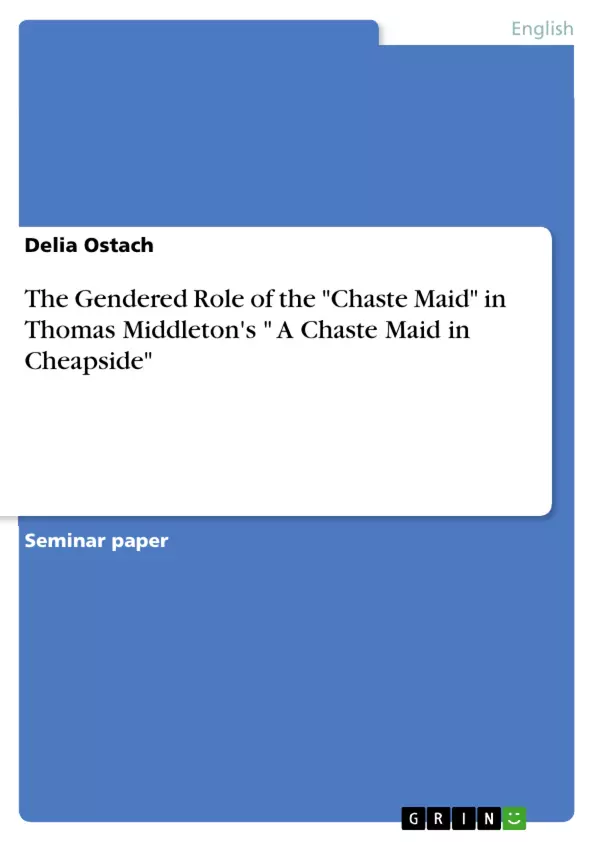The city comedy "A Chaste Maid in Cheapside" was written by Thomas Middleton in 1613 and published in quarto in 1630. It is situated in Cheapside, the main market square in London then. The story consists of several plots that develop around the constituent families and cross in the course of the play.
In this work, I explore a part of Renaissance London. With the help of Thomas Middleton’s play "A Chaste Maid in Cheapside", published in 1630, I investigate the gender role of the main character Moll, who is also the “chaste maid”. I draw attention to the questions: How is “the chaste maid” represented? What is her role within the social systems of family, lover and arranged marriage partner? How is Moll an example for women’s positions between gender and social roles within society? I argue that Moll’s role shows a clear example of how women were treated unequally and how they had less rights than men. When analyzing the woman’s role within society, I consult secondary sources that examine the image of women and gender during that time so that the satire of the play can be understood accordingly.
Inhaltsverzeichnis (Table of Contents)
- Introduction
- Introducing City Comedy
- The Gendered Role of Middleton's "Chaste Maid" As a Microcosm of Society
- The Role within Her Family
- The Role in the Relationship with Her Lover
- The Role in the Relationship with Her Arranged Marriage Partner
- Conclusion
Zielsetzung und Themenschwerpunkte (Objectives and Key Themes)
This work explores the gendered role of Moll, the "chaste maid," in Thomas Middleton's play A Chaste Maid in Cheapside, focusing on her position within the social structures of family, lover, and arranged marriage partner. The study aims to demonstrate the unequal treatment and limited rights of women in Renaissance London.
- The representation of the "chaste maid" in city comedy.
- The social and familial constraints imposed on women in Renaissance London.
- The influence of societal expectations on women's relationships with lovers and arranged marriage partners.
- The use of satire in city comedy to highlight social inequalities.
- The exploration of gender roles and their impact on women's agency in Renaissance London.
Zusammenfassung der Kapitel (Chapter Summaries)
The introduction sets the historical and literary context for the study, focusing on the emergence of Renaissance London as a dynamic center of trade and culture. It introduces the play A Chaste Maid in Cheapside and outlines the research question: How does the "chaste maid" embody the societal limitations imposed on women in Renaissance London?
The second chapter explores the genre of city comedy, highlighting its satirical and cynical nature, which often focuses on themes of sex, marriage, and money. The chapter discusses the use of caricature-like figures and the limitations of city comedy in representing a realistic picture of society.
The third chapter provides a brief summary of the plot of A Chaste Maid in Cheapside, introducing the main characters and their roles within the play's complex narrative.
The main body of the work will analyze Moll's role within the social systems of her family, her relationship with her lover Touchwood Junior, and her relationship with her arranged marriage partner, Sir Walter.
Schlüsselwörter (Keywords)
Key themes and concepts explored in this work include city comedy, Renaissance London, gender roles, social structures, family dynamics, arranged marriage, satire, and the representation of women in early modern English literature. Through an examination of Thomas Middleton's A Chaste Maid in Cheapside, the study explores the social constraints imposed on women in Renaissance London and their agency within a patriarchal society.
- Quote paper
- Delia Ostach (Author), 2016, The Gendered Role of the "Chaste Maid" in Thomas Middleton's " A Chaste Maid in Cheapside", Munich, GRIN Verlag, https://www.hausarbeiten.de/document/388610


